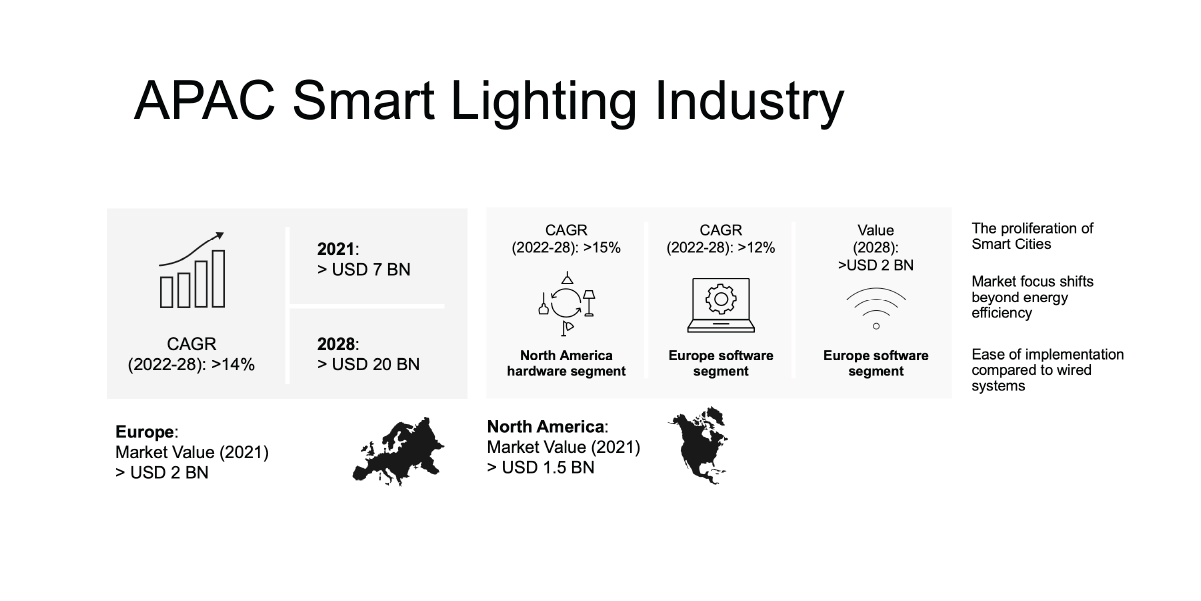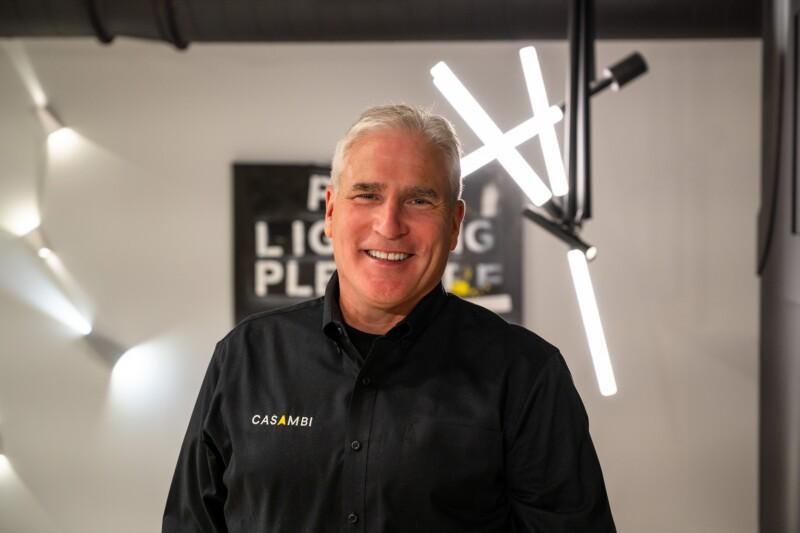Emerging trends driving the need for wireless lighting controls

There are a number of macro and emerging trends in the APAC region that are driving new, exciting developments in the lighting industry. Movements that Casambi anticipated, and thus positioned itself to ride the oncoming wave. As the world wakes up to the benefits of going wireless, the company is prepped and poised to support the transformation with its wireless lighting control solution and thriving open ecosystem. Tommy Hoo, Strategy and Marketing Leader for Casambi APAC explains all:
Various sources indicate that the global smart lighting market size has already exceeded USD 7 billion and is expected to grow at a CAGR of 15%. The rising demand for smart lighting globally is encouraging players from the lighting industry to invest in their R&D and launch new product innovations. The APAC smart lighting industry is expected to grow to a market size of more than USD 2 billion by 2028. This bullish growth is fueled by three key factors:

All hail the Smart City.
Firstly, the proliferation of Smart Cities is creating opportunities for the smart lighting industry. Many developed economies are already in the second decade of their smart city strategies. Right now, many emerging economies are past the planning stage and are rolling out smart city projects. The concept of smart lighting has now since expanded into the built environment, that is to say, into our homes, schools, offices, and even heritage buildings.
Beyond energy matters.
Secondly, the market is increasingly shifting focus beyond energy efficiency. With the introduction of LED Lighting in the early 2010s, the advancements in lighting technology have made it possible to create lighting solutions that not only save energy but also provide better performance and functionality. Thus, with the above expectations, the demand for smart lighting continues to spur on, with expectations of lighting systems that can execute dimming, color control, scene setting, and time scheduling, via any smart device. Consumers are also increasingly aware of the impact of lighting on their well-being and the environment and are seeking products that are not only energy efficient but also sustainable and healthy.
Frustration-free installations.
Thirdly, smart – or in this case wireless – lighting controls are easier to implement in comparison to traditional wired control systems. Without the hassle of additional wires and hardware, smart lighting is now easily achievable with wireless lighting controls. This provides ease of implementation and provides tangible savings during the execution stage.
Outside factors driving change.
We are now living not only in a climate emergency but a global planetary crisis, where all of us have a part to play in resolving it. Little over a week ago, we saw countries in the APAC region that recorded all-time hot temperatures – across China, India, Japan, Korea, and Thailand. Even in Singapore, we are experiencing sweltering temperatures of more than 35 Degrees Celsius! To tackle this impending crisis, the world requires not only an energy reset but also solutions that support sustainable living.
The World Green Building Council has set out a ‘systems’ approach to managing change and catalyzing the uptake of sustainable and decarbonized built environments for everyone and everywhere. Their approach encompasses initiatives beyond energy efficiency and all existing and new buildings are advocated and mandated in certain cases, to reduce both operational and embodied carbon. Operational carbon refers to carbon emissions related to energy for operations, while embodied carbon is related to emissions from sourcing, manufacturing, and transportation of materials and products used in building construction.
Many governments in the APAC region have already implemented these initiatives through the revision of existing building codes, ensuring that the built environment progresses toward Super Low Energy Buildings and advances to Net Zero Whole Life Carbon by 2050. In 2021, the Singapore government launched Green Mark 2021 as part of the Singapore Green Building Masterplan which has taken effect since 1 November 2021.

The new scheme is positioned to align with the United Nations’ Sustainable Development Goals, based on the five pillars of People, Prosperity, Planet, Peace and Partnership. While all 17 SDGs are important, wireless lighting controls in principle can strongly contribute to the goals supporting Good Health and Well Being, Affordable & Clean Energy, Industry Innovation and Infrastructure, Sustainable Cites and Communities, Responsible consumption and Production and Climate Action.
How Casambi supports the SDGs.
Wireless lighting control technology coupled with smart lighting technologies presents solutions that ensure the well-being of the users. Casambi’s lighting control solutions enable the easy implementation of Human Centric Lighting via the Casambi App. Circadian profiles can be customized based on various times of day, months, or seasons. Both occupancy and daylight harvesting sensors can be deployed to allow occupancy controls and the maximal use of daylight. Casambi also supports the circular economy through parts harvesting. Without the restraints of control wires, our ecosystem products or the Casambi Bluetooth Units deployed can be recovered and reused in case of any relocation, renovation, or retrofit exercises.
Opportunity Knocks.
In view of these global developments, there underlie huge opportunities where we can collectively come together to contribute to tackling this planetary crisis. Many existing building owners will have to go through retrofitting exercises to not only conform to government regulatory standards but also show their commitment to achieving these sustainable goals.
Our sales partners can now deliver personalized, energy-efficient lighting control experiences without control wires and bulky hardware, contributing to reducing both operational and embodied carbon emissions. The use of sensor data for analysis also provides building owners with an overview of electrical consumption and how they can further reduce unnecessary electrical waste.
Our OEM partners are now able to offer lighting controls as part of an unparalleled lighting experience, giving them a share of the lighting controls market, which used to be unachievable. Our open ecosystem approach also encourages new innovative products to be part of their current offering. In summary, the market requires a solution that provides design flexibility, and scalability, is easy to implement and provides significant resource savings.

With you all the way.
Since launching our APAC operations last year, our team here has grown threefold and now covers Singapore, New Zealand and Australia with all the core functions supported – ecosystem support, technical support, specification and marketing services. We’re onboarding new OEMs all the time and have introduced more than 50 new ecosystem products in the last twelve months.
The APAC office is set up in a manner whereby your journey with Casambi is taken care of along the entire way. If you have an existing lighting project for which you would like to implement Casambi lighting controls, our team is fully equipped with dedicated functions to ensure that you are supported throughout the journey.
Interested in learning more about Casambi? Drop us a note, and we’ll reach out to you:



